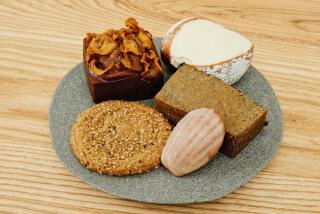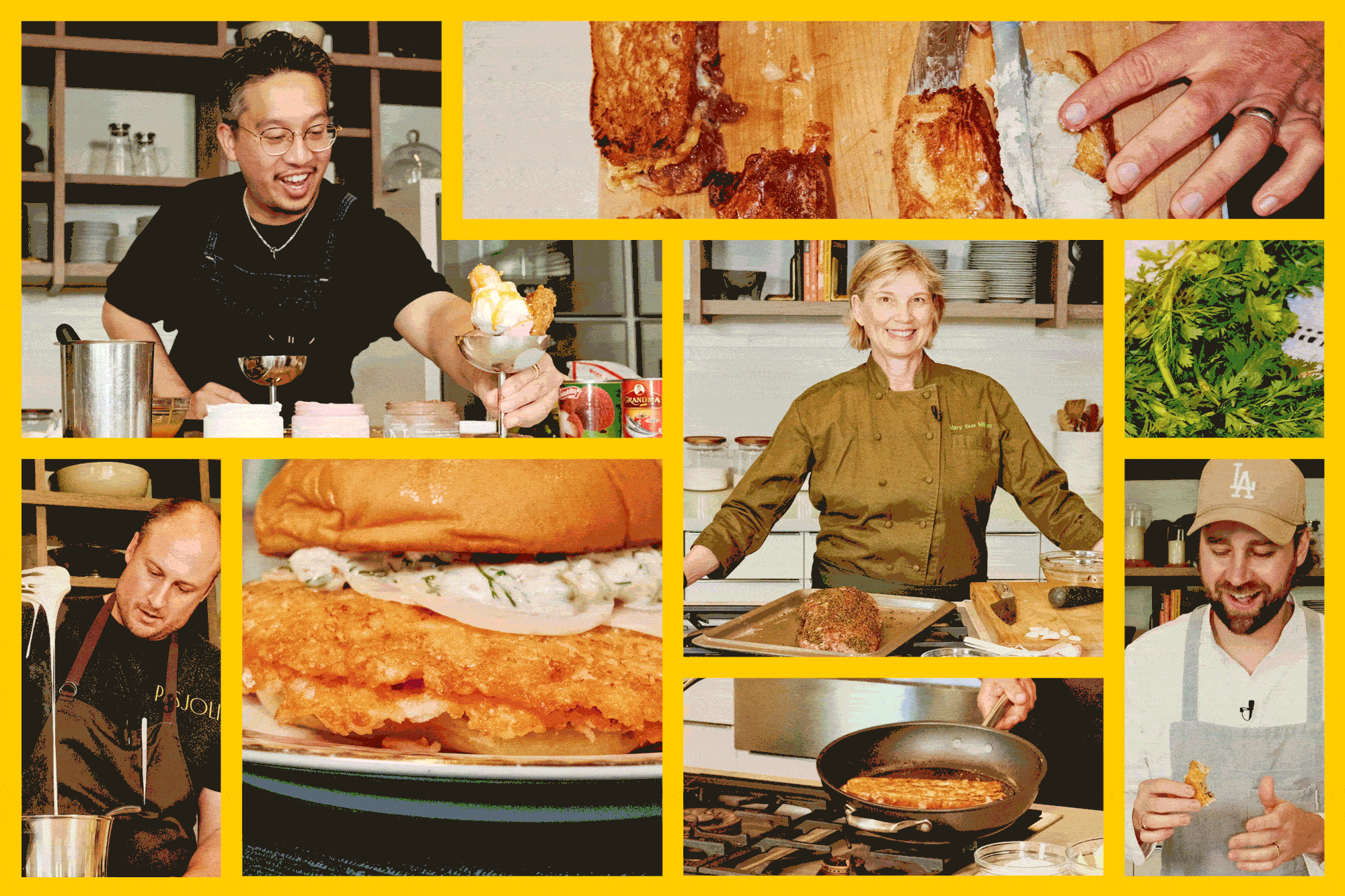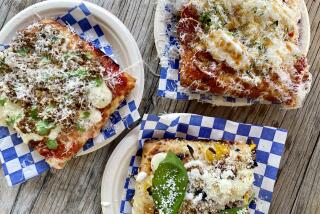Yes, pastry chefs are real chefs and women are leading the baking revolution
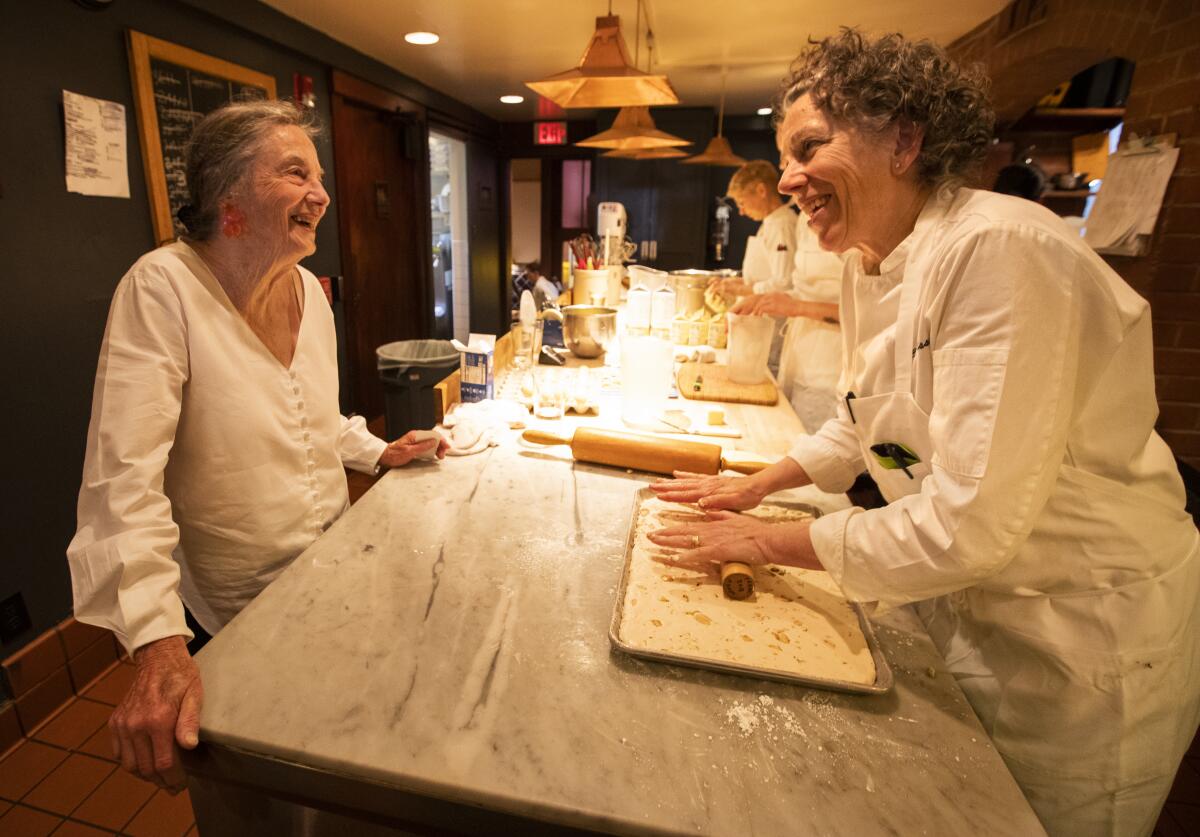
For decades, the typical restaurant kitchen in the U.S. operated on faulty logic:
Women can’t cook.
For the record:
4:00 p.m. Aug. 4, 2019A previous version of a photo caption said Liz Prueitt was pictured at Tartine Bakery in San Francisco; the photo was taken at Tartine Manufactory. A different photo caption misspelled the last name of Mary Jo Thoresen. And an earlier version of this story said Karen Yoo bakes pastries at McCall’s Meat & Fish Co. in Los Feliz; Yoo closed the bakery July 28.
Baking isn’t real cooking.
The conclusion? Women can bake.

Sign up for the Tasting Notes newsletter
The savory side, the hot line, was considered the “real thing,” said restaurateur Nancy Silverton, the only chef to win James Beard awards for both outstanding pastry chef and outstanding chef. Baking meant following rigid recipes, which was women’s work — at least to the men who did the hiring.
But female bakers, exiled to the pink ghetto of the pastry kitchen, built an alternate kitchen culture as different from the savory side as its inhabitants were. It has become a land of opportunity for women, not a dead-end but a first step toward better restaurant jobs or their own bakeries, cafe-retail hybrids, food trucks and stalls — whatever a young entrepreneur might come up with.
While it happened around the country, the spine of the story runs through California. “It could only have happened here,” said Michael McCarty, who opened Michael’s in Santa Monica in 1979 and gave Silverton her first pastry job. “Anyone can reinvent themselves here; it’s fundamental to the place. And early on, you had chefs who said, ‘Hey, I live in California. I can do whatever I want.’”
Baking is no longer women’s fate. “The bakers who work for me are all where they want to be,” Silverton said. “These people like the dessert world. It’s definitely a choice.”
::
On a recent Wednesday, the morning bakers at the Manufactory in downtown Los Angeles, all of them women, came to work before the sun was up to get the morning’s pastries into the oven, the first of three shifts that ran until 8 that night. The big kitchen was an airy, quiet place, populated by cooks who spoke in low tones if they spoke at all.
They share a skill set with their predecessors — an attention to detail, a mastery of precise techniques, a talent for the minute adjustment that makes all the difference. But these days, sous chef Anna St. John said, female bakers come to work with “momentum” — an eye on a promotion or a place of their own — and a dessert-without-borders approach to the future.
“The pastry kitchen used to be very polite,” St. John said. “Now it’s just badass.”
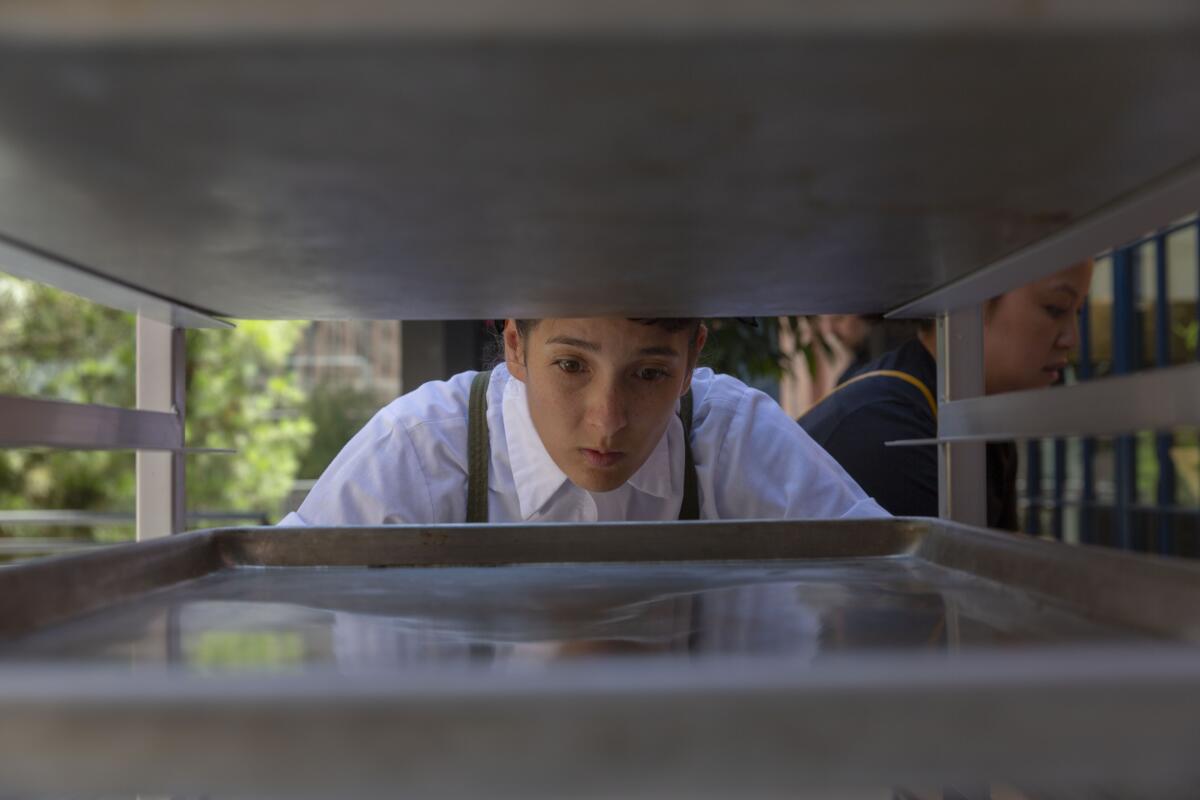
The pastry kitchen used to be very polite. Now it’s just badass.
— Anna St. John
The unlikely revolutionary who started it all was the first pastry chef at Berkeley’s Chez Panisse in 1971. Lindsey Shere, now 84, started baking when she was 9 and never considered whether it was less challenging than cooking. She was surprised to learn that some of the men in the kitchen did.
“Occasionally an attitude would come out in some way,” Shere said, “but I really didn’t think too much about it.”
She ignored a colleague’s overheard comment that a pastry chef isn’t a “real chef” rather than try to correct his mistake. “It was just a microcosm of the time.”
Shere agreed that cooking and baking were different. “You can’t adjust things midstream” with baking,” she said, while “cooks could work on the fly, change things as you go along.”
What she didn’t buy was the prevailing belief that cooking was art, while baking was a glorified home-ec project. In fact, she didn’t see the need to compare them and declare a winner at all.
She was insulated by lucky circumstance. The Chez Panisse pastry kitchen was located at first in a small cottage behind the restaurant, so she was largely shielded from what the cooks were saying. She worked for a woman, co-founder Alice Waters, was 10 years older than most of the staff and had a family, which meant she missed what she called “a pretty wild scene” after hours. She put all her energy into developing a seasonal dessert calendar that generations of California bakers have adopted — a tectonic shift in an era of year-round French desserts.
Shere preferred the pastry kitchen, with its small, close-knit staff and lack of competitive hierarchy.
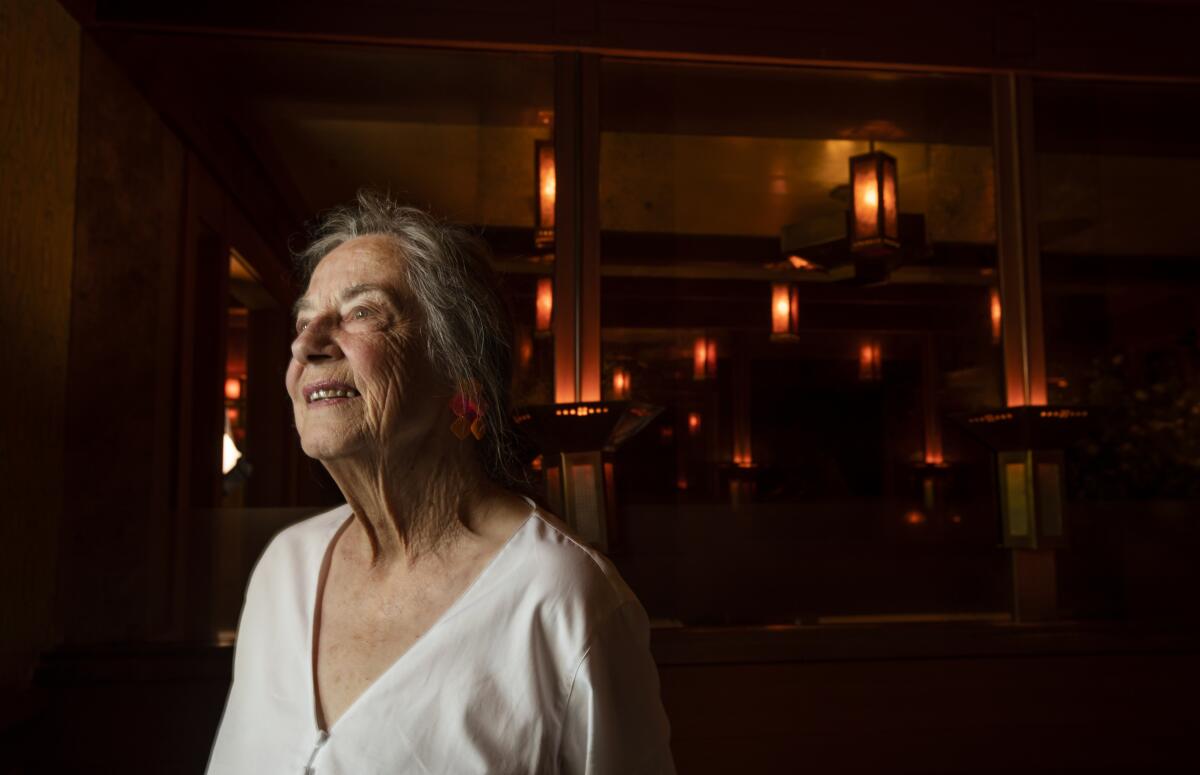
To this day she has no idea why most men stay away from baking, though she was prepared to float a theory or two. Maybe a “mother thing” put them off, she said — the idea that dessert was a treat, inessential, something a mom might turn out for a family celebration. Or maybe men were uncomfortable in a kitchen where women ran the show.
“Partly,” said Shere, with a hint of a smile, “I’m sure they feel seriously threatened.”
::
The dessert landscape in Los Angeles in 1976 was bleak — a few French or Jewish bakeries and restaurants that served “bought desserts” from outside suppliers, Silverton recalled. That was fine with her. After a year at Le Cordon Bleu in London, the last thing she wanted was a pastry job.
“I still had PTSD from that,” she said, “Because you’re learning the basics and there’s no flexibility. You’re an executioner. ‘Can I use less sugar?’ ‘Can’t I cut down the amount of gelatin?’ Everything was ‘No!’”
But baking was a “foot-in-the-door job” in the kitchen at Michael’s in Santa Monica, so she took it. Three years later she became the first pastry chef at Wolfgang Puck’s Spago, where her approach had nothing to do with polite women making paint-by-number sweets.
Silverton combined Shere’s use of local, seasonal ingredients, along with the techniques she’d learned, to create signature desserts — and she never let up. When her first child was born in 1982, she gave herself a long weekend before showing up at Spago, newborn in tow, “not full-time or anything,” she said, “but to check to see how everything was.”
Like Shere, she enjoyed the autonomy of the pastry kitchen, where each cook made desserts from start to finish. “Everything we did, we did ourselves,” she said. “No line cook complaining about the mayonnaise or the size of the minced chives.”
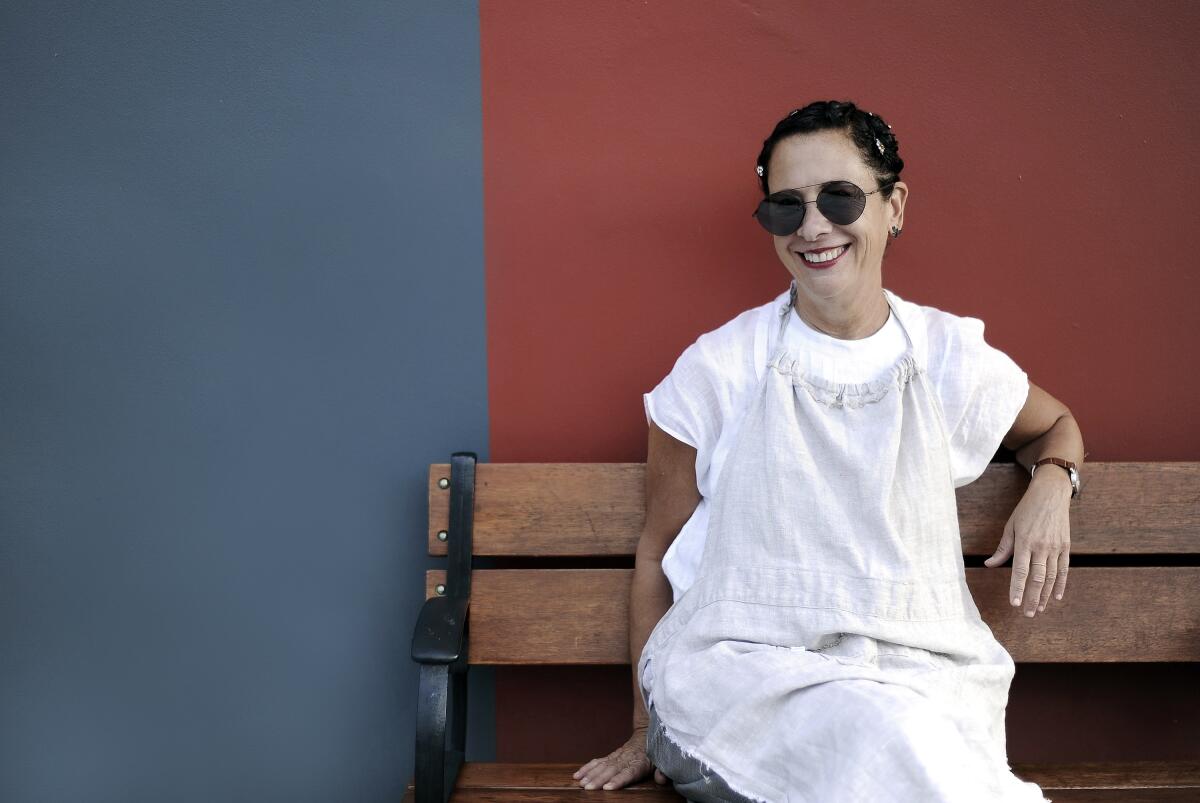
I made the possibility of great bread a reality. And I’m a girl too.
— Nancy Silverton
But making innovative desserts wasn’t enough of a challenge for a woman who’d grown up surrounded, she said, by feminist role models. She wanted her own business.
In 1989, Silverton and her then-husband, chef Mark Peel, opened Campanile, with La Brea Bakery next door. If her Spago desserts bent the rules, La Brea Bakery pushed them even further. She elevated bread from an opening act to the main stage, and introduced pastries like her rosemary corn cake, whose sweet-and-savory descendants are now standard fare.
In 10 years La Brea had a wholesale business with annual sales of $200 million, and the couple sold it three years later. Since leaving Campanile and opening the Mozza group of restaurants, starting with Pizzeria Mozza in 2006, she has been much more involved in the savory side.
Although other bakeries focused on quality bread took off in California before La Brea — most notably Steve Sullivan’s Acme Bread in Berkeley — it was Silverton’s name that quickly became synonymous with great bread, in part because having a woman at the helm of a bakery was a novelty at the time.
“I made the possibility of great bread a reality,” she said. “And I’m a girl too.”
::
La Brea Bakery put the rest of the country on notice: California was a welcoming place for a female baker.
“‘If you have even the smallest amount of drive,’” a friend told baker Liz Prueitt in the early 1990s, “‘you will get very far ahead in California.’” Prueitt and her bread-baker husband, Chad Robertson, left the East Coast and eventually opened the tiny Bay Village Bakery in Point Reyes Station, followed by Tartine Bakery in San Francisco in 2002.
Tartine was a magnet for young female bakers willing to work crazy hours — both trained cooks and eager hopefuls who signed on as unpaid interns. Prueitt wanted to create a kitchen that could keep up with them, which meant reconsidering some of the gender clichés that consigned women to pastry in the first place.
“I’m not naturally an ‘attaboy’ person, which is so not-female of me,” she said, but she figured there had to be a middle ground between cutthroat and warm-and-fuzzy. She rejected chef coats that conveyed status, encouraged a comradely atmosphere as long as the work got done, and strove for a “two-way street” rather than a dictatorship. Outsiders, unable to grasp the new business model, asked Prueitt in the early days if Tartine was a collective.
It was a work in progress — as were the pastries, despite notions about the constraints of baking.
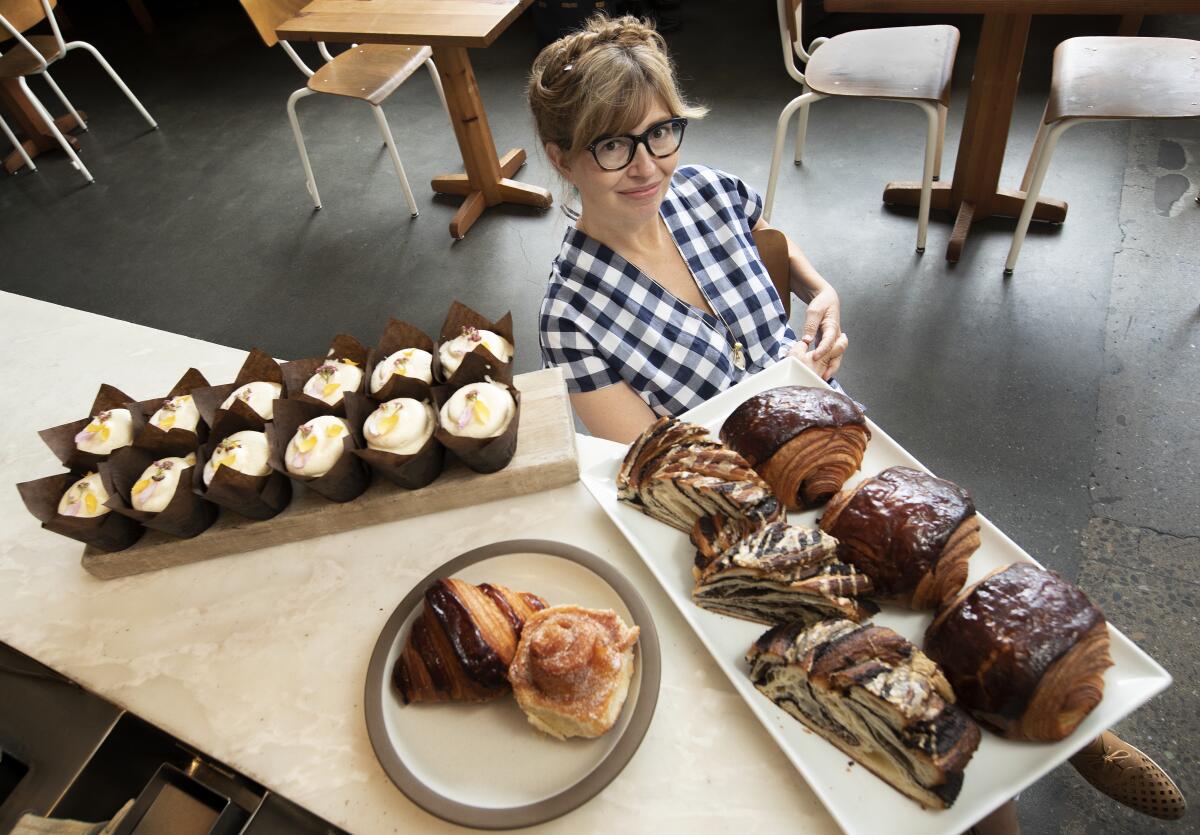
Collaboration is a very strong aspect of women working together.
— Liz Prueitt
“People think of a baked good as a static snapshot, as something that must stay the same forever,” she said. She did not. Her own gluten intolerance inspired her to create new versions of old favorites and to encourage employees to come to her with recipe ideas, which is why rugelach made with einkorn flour ended up in her upcoming cookbook, “Tartine: A Classic Revisited,” being published in October.
“Collaboration is a very strong aspect of women working together,” Prueitt said. “There’s such a lovely thing when you really know what you’re doing, rolling out croissants, making cookies, and you’re just talking about your life.”
At 56, success and tired feet have taken Prueitt out of the kitchen on a daily basis; her job today is mainly focused on managing the workplace she created — multiple versions of it, including the L.A. Manufactory, a new Tartine at Inner Sunset in San Francisco and a bakery in Seoul.
It’s hard for her to talk about. “The reason it chokes me up,” she said, “is that I miss it so much.”
::
Zoe Nathan walked by Tartine on her way home from a line cook job in 2003 and stopped to watch the bakers through the window. “A bunch of girls,” she said, “and they had their tattoos, they looked like me, didn’t look flowery and soft. They didn’t look ‘nice’ at all, and I thought, ‘I want to be there. I want them to be my friends.’”
Nathan, now 37, was a veteran of kitchen harassment before it became a headline, including a stint on the hot line at Lupa in New York City, then part of Mario Batali and Joe Bastianich’s empire, where a male cook more than once followed her into the walk-in refrigerator to kiss her. She moved to San Francisco and a new job, but still felt out of place.
The morning after she passed Tartine, she walked into the bakery and offered to do anything, for free, in her off hours. They handed her a box of apples. “I cut them so fast,” she said. “I felt as though my social life depended on it.” She was offered a job as a morning-shift baker the next day.
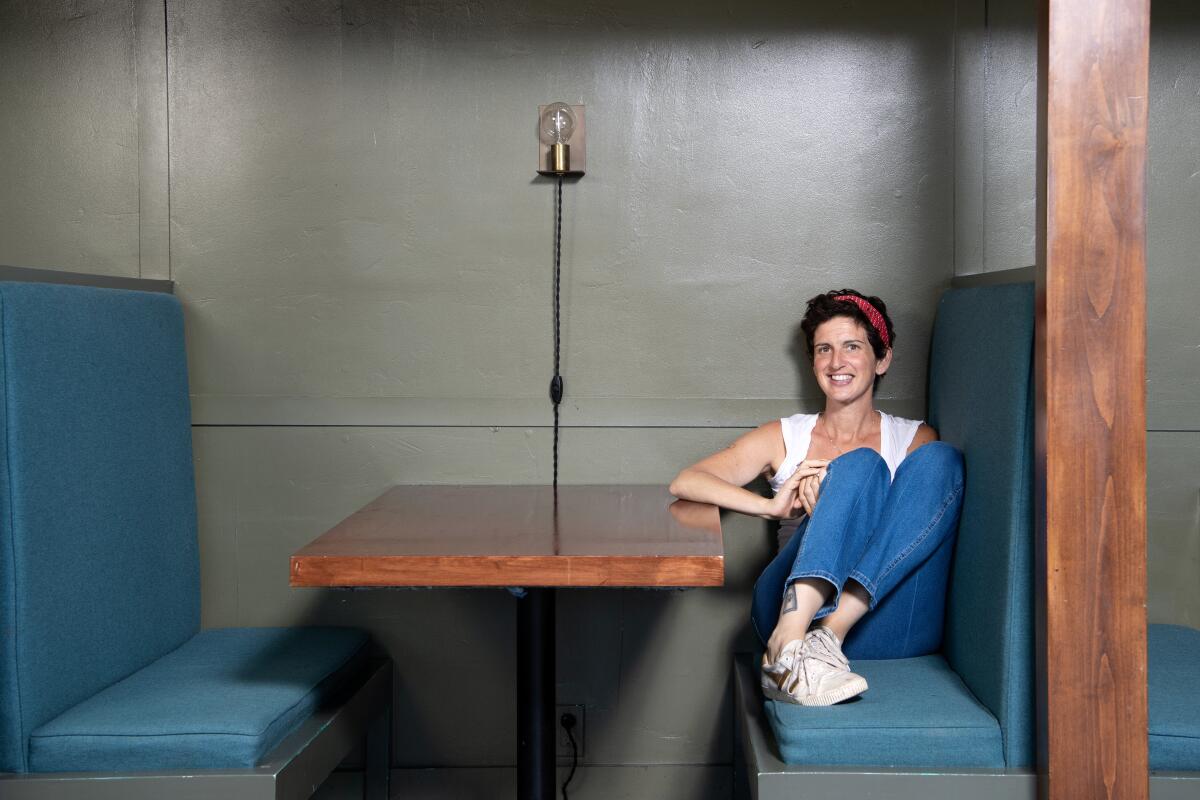
Her schedule belied stale notions of the weaker sex: predawn shifts at Tartine, “living, literally, in a friend’s closet,” and a midday nap so she could learn about bread in the afternoon. Four years later she became the pastry chef at Rustic Canyon in Santa Monica.
Nathan eventually married Rustic Canyon restaurateur Josh Loeb, and they now co-own eight restaurants and an ice cream business. For over six years, until last summer, she stuck to a daunting workweek: After saying goodnight to the couple’s three small children, she arrived at work at 1:30 in the morning and then dashed home as soon as her husband called to say they were starting to stir.
At work, she encourages her staff to take risks, as she did, rather than stick to tried-and-true recipes. “I’ll still go in and say, ‘Throw this out, all five things you just made,’ but you know what? I say it to myself too.”
That, she said, is what a female baker looks like. “You can’t do this half-assed,” she said. “You go to bed at 8, you wake up very early, you don’t go out, you have to change your whole life. Bakeries are very fast-paced places. You have to be on it.”
::
The new threat is economic, but it’s an equal-opportunity roadblock: Pastry chefs, male or female, are “the first ones to go” when a restaurant needs to cut costs, said Antico pastry chef Brad Ray. “If you can’t pick up a knife and work in the savory kitchen too, you might be struggling to find a job soon.”
McCarty no longer employs a pastry chef, a response to how diners prefer to end their meals these days. “It’s the shared-plate thing,” he said. “What people need at the end of the meal isn’t a plated dessert, it’s three bites of sweetness, cookies or some chocolate, something very simple.”
Women who’ve devoted their careers to baking are frustrated that pastry chefs are considered expendable: Prueitt dismissively refers to the “chef’s dessert” — an easy bread pudding or crème brûlée that a line cook can make as opposed to the more technically demanding creations made by pastry chefs — and Nathan complains about the mindset that makes dessert an afterthought. But a restaurant can’t exist without a savory menu. Sometimes bakers lose by default.
So women who bake have been looking beyond a restaurant’s walls to create their own alternatives.
Baker Nicole Rucker gained a following making desserts for other people’s restaurants, and less than a year ago opened Fiona, a bakery and cafe on Fairfax Avenue; her cookbook, “Dappled,” was just published. In Atwater Village, Na Young Ma serves a loyal clientele at Proof, another bakery-cafe hybrid.
Women say they don’t waste energy on naysayers, whether they’re men who cling to old attitudes about baking or restaurants prepared to do without them.
“Discrimination will always be there,” Nathan said, “but that’s why thousands of girls say, ‘Screw them, I’ll open my own place. I’ll make money, and you can’t cut me. I’m the boss of my world.’”
More to Read
Eat your way across L.A.
Get our weekly Tasting Notes newsletter for reviews, news and more.
You may occasionally receive promotional content from the Los Angeles Times.
